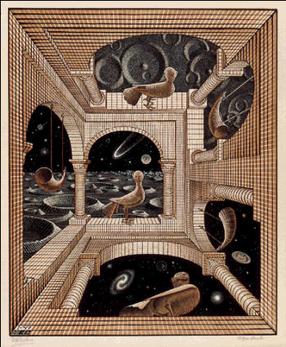"...When the art world turns its gaze on traditional craft materials, as is the case with Rebecca Warren's or Grayson Peny's ceramics, the sense is that it's not only OK but necessary fir a contemporary artist to be amateurish." (Adamson, When Craft Gets Sloppy, Page 1)
This isn't just a trend in the art world. It's hip to be grungy, to have a hangover, to wear second hand, to be a bit on the wild side – rough is the new clean, they might say. "Calculated sloppiness" can be just as valuable to the art world as precision art, and in some cases, more a necessary for a given message. Although there is a classic division between fine art and craft, the the two differ very little in commentary – take printmaking for example: a concept is represented in a bizarre, unconventional way but made into a refined-looking, clean (perhaps) final piece. On the other hand, the same concept might be discussed by a more visceral means, one rooted deeper in process than product – craft. To begin breaking down the potentially harmful barrier between art and craft, we mustn't describe construction quality absolutely, but relatively.
"The DIY movement, currently at the height of fashion, is an obvious expression of this open-source culture, and the crafters' emphasis on community and gratification often results in a casual attitude to technique. This permissiveness has deeply penetrated art-school culture, fascinatingly blurring the line between hobbyism and professional endeavor." (Adamson, When Craft Gets Sloppy, Page 2)Suppose every grade schooler were to be taught Adobe Photoshop and Illustrator in their entirety and told to create a graphic design portfolio. Of what benefit would this be to the aspiring marine biologist? The farmer? The fireman? Little, if none! The suppose the same group is given a lump of clay and told that whatever they have made by next class will be fired and preserved as their creation. Formal training is not necessary for a child to be able to produce meaningful art. In fact, quite the opposite is true – those that go without any sort of institutional education for a career in art are frequently those who generate the most revolutionary and catchy styles. As mentioned above, this misconception is also lost in its apparent confinement to the art world when it really extends much farther, even into Silicon Valley, where some of the geniuses haven't even earned their college degrees yet.
"'What is Art?' every generation asks. 'What is Craft?' 'Is one better than the other?'" (Jensen, Investing in the Object, Page 1)
Above all other possible responses to this fundamental question is that no kind of art is 'better' than another. Each form has its trivialities, and it is left to the tuned eye of the viewer to decide what is and what is not good art within each field. One cannot say that one of Beethoven's symphonies is a better artistic achievement than Monet's Water Lillies. Perhaps that Beethoven's work is a better representation of a composer's full spectrum of ability than The Rolling Stones, but even so, we cross boundaries between genres, which in itself is a dangerous comparison, as each genre draws from different talent groups and approaches to composition. Without trying to define either art or craft, it is still possible to offer reasons for nondiscrimination.
"I think of my own work as conceptual but not inaccessible. It's intuitive. There's an entry point, which is often the craft of it. That's my trick." (Jensen, Investing in the Object, Page 2)
Perhaps if more artists thought this way we would have a more comprehensive sketch of where we stand in our creative evolution as a society. Until more artists start creating for the masses and allowing their message to be discovered, there will be entire sections of art that have cut themselves off from the rest and from free interpretation. Jensen brings up an important (I dare not say correct) point here by saying that it is a trick to obscure but not make completely invisible the purpose of an artwork. Intuitive art is easily some of the most pleasant to view, as it rarely demands effort to appreciate and enjoy, and is never far from a sophisticated deduction about its deeper cause.







